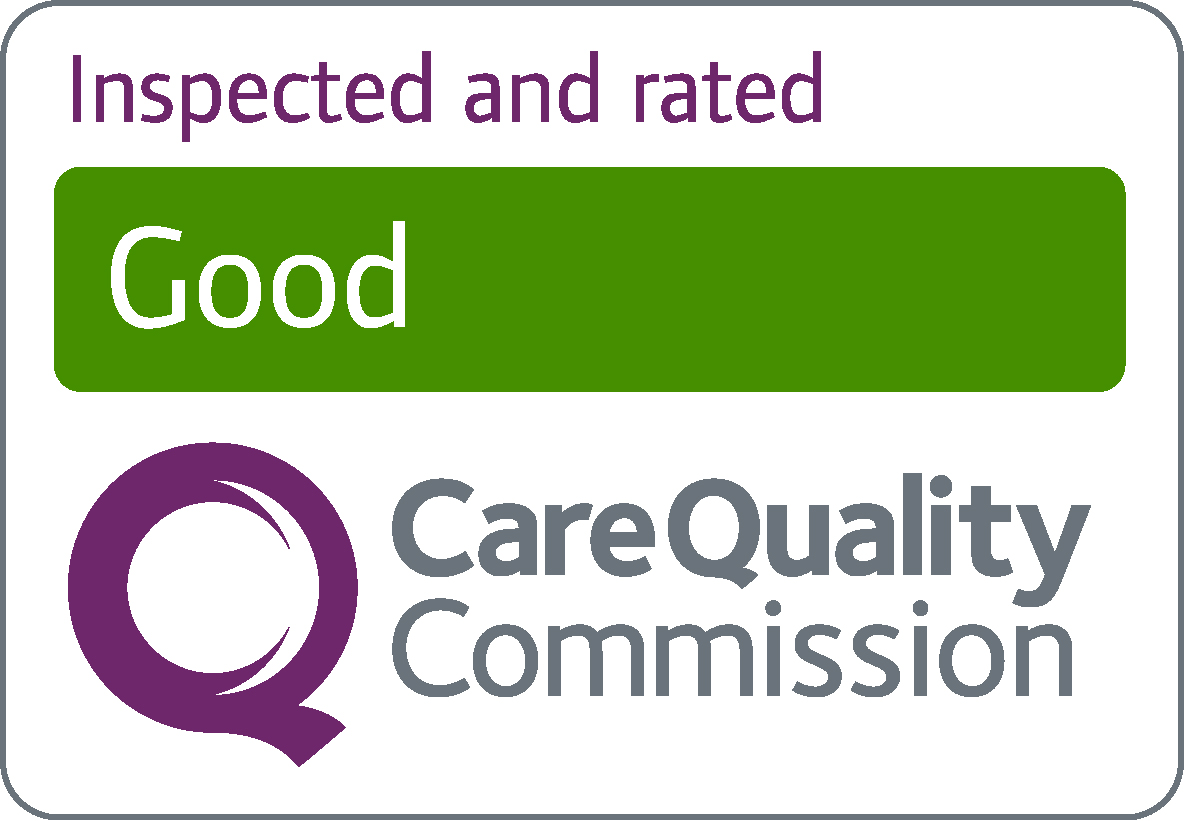The Dangers of Binge Drinking this Winter

on 23 Oct 2024
What’s included?
- Introduction
- The Risks of Excessive Alcohol Consumption in Winter
- Injuries Related to Binge Drinking
- Alcohol Poisoning: A Serious Threat
- Development of Alcohol Use Disorder (AUD)
- Seasonal Factors Contributing to Increased Drinking
- Drunk Driving Risks in Winter
- Impact on the Immune System
- Alcohol and Flu Season Vulnerability
- Safety Tips for Responsible Drinking
- Setting Limits and Knowing Your Limits
- Transportation Alternatives
- How Delamere can help you
As the winter months draw near, the festive spirit can often lead individuals to indulge in excessive drinking. Binge drinking during this season not only poses immediate risks but can also have a long-term impact on personal health and safety. Understanding these dangers is essential as we navigate through celebrations and colder weather.
With longer nights and holiday stress, winter can create an environment that encourages higher alcohol consumption. This increase in drinking can severely impair body temperature regulation, leading to a heightened risk of hypothermia. Additionally, the combination of icy conditions and impaired judgment often results in a significant rise in accidents and injuries during this season.
In this article, we will explore the various dangers associated with binge drinking in winter, including the threat of alcohol poisoning, the development of alcohol use disorder, and the risks of drunk driving. Furthermore, we’ll provide safety tips to encourage responsible drinking, ensuring a safer and healthier winter for all.
The Risks of Excessive Alcohol Consumption in Winter
As winter approaches, many may seek the warmth and revelry offered by the festive season’s celebrations, often accompanied by an alcoholic drink or two. However, the colder months bring heightened concerns regarding the practice of heavy drinking, commonly referred to as binge drinking. Defined by consuming large amounts of alcohol in a short period to raise blood alcohol levels above the legal limit, binge drinking poses significant health risks, worsened by the extreme weather of the season. Alcohol addiction, a potential long-term consequence of repeated binge drinking, showcases the severity of alcohol abuse.

The effects of alcohol on the body are complex, and during winter, these effects can become more pronounced and dangerous. As alcohol dilates blood vessels, it can lead to a false sensation of warmth, which may lead individuals to underestimate their exposure to the cold, thus amplifying risk factors associated with the winter season, such as hypothermia.
Impact on Body Temperature Regulation
Alcohol’s impact on body temperature regulation is often misunderstood. Consuming high levels of alcohol can lead to an initial increase in heart rate and skin surface blood flow, leading to the aforementioned sensation of warmth. However, this is misleading, as it does not equate to an increase in core body temperature. In fact, this expansion of blood vessels near the skin’s surface increases heat loss, potentially lowering the body’s overall temperature.
During winter, the body’s natural response to cold is to constrict blood vessels, conserving heat by redirecting it to vital organs. Heavy drinking impedes this mechanism, accelerating the loss of body heat and increasing the risk of cold-related illnesses.
Increased Risk of Hypothermia
Excessive drinking can markedly increase the likelihood of hypothermia for individuals in cold environments. Hypothermia occurs when the body loses heat faster than it can produce it, leading to dangerously low body temperatures. When inebriated, individuals may not respond appropriately to cold temperatures, as alcohol impairs the body’s shivering response—a key way it generates heat when cold. Moreover, drunk individuals may make poor decisions, like removing clothing or falling asleep outdoors.
Heavy alcohol consumption complicates the body’s ability to regulate temperature and discern risks, leading to potentially life-threatening scenarios. Such effects can be exacerbated in individuals who have pre-existing risk factors, such as the elderly or those with cardiovascular conditions.
In conclusion, binge drinking carries inherent dangers that escalate during the winter, with the insidious effects of alcohol challenging the body’s defenses against the cold and potentially leading to medical emergencies. Rational decision-making is impaired under high levels of alcohol, often leading to accidents like drunk driving, and in the case of cold exposure, tragic outcomes. It is imperative to be aware of these risks and to consume standard drinks responsibly, if at all, to stave off the harmful consequences of heavy alcohol use.

Call us confidentially at any time to speak to a member of our team.
Call us now: 0330 111 2015
Injuries Related to Binge Drinking
Injuries related to binge drinking come in various forms and can have significant impacts on an individual’s health and welfare. Excessive drinking can reduce body coordination and impair judgment, significantly increasing the risk of accidents and injury. The coordination required to avoid dangers or navigate tricky situations is often compromised after consuming heavy amounts of alcohol. Additionally, reactions to sudden hazards become delayed, and the ability to assess risk is reduced. Alcohol addiction has been shown to correlate with a higher incidence of emergency room visits due to both intentional and unintentional injuries.
Falls and Accidents
The association between binge drinking and an increased risk of falls and accidents is well-documented. High blood alcohol levels can lead to a lack of balance, blurred vision, and disorientation, all of which can contribute to falls that may result in serious injury. Staircases, uneven flooring, or even simple tasks like getting out of a car become hazardous with an impaired ability to judge distances and execute coordinated movements.
- Falls: Can lead to fractures, sprains, and head injuries.
- Accidents: Range from minor bruises to life-threatening injuries.
It’s crucial to understand the risk factors that could lead to such outcomes, which include but are not limited to the following:
- Impaired coordination and motor skills
- Delayed reaction times
- Reduced alertness
- Overestimation of one’s abilities
These can have dire consequences, especially in environments where attention to safety is paramount.
Snow and Ice Dangers
During winter, snow and ice add an extra layer of risk for individuals engaging in heavy drinking. The already perilous task of navigating slippery surfaces is compounded when levels of alcohol consumption render an individual less able to compensate for the unstable terrain. This increases the likelihood of slips, trips, and falls that can have serious consequences, such as concussions, hip fractures, and other impact-related injuries.
- Slips on ice: Can result in back injuries or concussions.
- Trips in snow: May lead to wrist or ankle injuries.
Precautionary measures when drinking in winter conditions should include the following:
- Wearing appropriate footwear with good traction
- Walking slowly and carefully on icy surfaces
- Staying indoors during heavy snowfall or freezing temperatures when intoxicated
- Having a sober companion to assist in navigating treacherous conditions
In essence, being aware of the heightened risks associated with binge drinking amid the challenges posed by winter conditions is key to preventing injuries.
Alcohol Poisoning: A Serious Threat
Alcohol poisoning is a severe and potentially fatal consequence of heavy drinking, where blood alcohol levels become toxic. It is crucial to recognise that it can stem from binge drinking, defined as consuming excessive amounts of alcohol in a short period. A standard drink – considered as 12 ounces of beer, 5 ounces of wine, or 1.5 ounces of distilled spirits – provides a measure to gauge intake, but excessive drinking goes far beyond this benchmark.
Symptoms of alcohol poisoning may include confusion, vomiting, seizures, slow heart rate, and hypothermia, signaling that immediate medical attention is necessary. High levels of alcohol can depress the nerves that control involuntary actions like breathing and the gag reflex, which prevents choking. A person suffering from alcohol poisoning could potentially choke on their own vomit or suffer from a fatal breathing interruption.
Risk factors for alcohol poisoning include high rates of consumption over a limited time, drinking on an empty stomach, or mixing alcoholic drinks with medications. During the winter months, individuals may mistakenly believe in the sensation of warmth after drinking, not realising that alcohol is actually lowering their body core temperature.
| Symptom | Action Required |
|---|---|
| Mental confusion | Seek emergency medical help |
| Hypothermia | Immediate warming and medical attention |
| Vomiting | Keep the person on their side to prevent choking |
| Seizures | Call emergency services |
| Slow heart rate | Urgent medical intervention |
In summary, alcohol poisoning is a grave result of heavy alcohol consumption, requiring prompt and knowledgeable action to prevent lasting damage or death.
Development of Alcohol Use Disorder (AUD)
Alcohol Use Disorder (AUD) is a medical condition characterised by an inability to stop or control alcohol use despite adverse social, occupational, or health consequences. The development of AUD can be a gradual process, typically involving several stages of drinking behaviour.
- Initial Use: Exposure to alcohol through social settings or curiosity.
- Increased Use: Greater amounts of alcohol consumed as tolerance develops.
- Problematic Use: Drinking leads to problems such as failing to fulfill major obligations at work, school, or home.
- Dependence: The individual experiences withdrawal symptoms when not drinking and is compelled to drink to avoid these symptoms.
- Addiction/Alcoholism: Alcohol consumption becomes a central focus of life. The individual continues to drink despite harmful effects.
Risk factors that contribute to the development of AUD include genetics, the age at which drinking began, family history, exposure to a high-alcohol environment, mental health conditions, and patterns of heavy drinking.
Diagnosis of AUD is based on an individual meeting certain criteria set by the Diagnostic and Statistical Manual of Mental Disorders (DSM-5), which include a pattern of alcohol use leading to distress or impairment, manifested by at least two of eleven symptoms over a 12-month period. Treatment for AUD often involves a combination of therapy, medication, and support groups.

Seasonal Factors Contributing to Increased Drinking
The winter season comes with unique factors that can inadvertently contribute to higher levels of alcohol consumption, potentially leading to the risks associated with heavy drinking and binge drinking. These factors can intensify the propensity to drink larger amounts of alcohol, elevating blood alcohol levels beyond safety thresholds. Understanding these seasonal influences is vital in recognising and mitigating the dangers associated with excessive drinking during the colder months.
Shorter Days and Longer Nights
The winter season is marked by shorter days and longer nights, an environmental change that can affect an individual’s mood and behaviour. Reduced daylight hours can result in disruptions to circadian rhythms and can lead to feelings of sadness or depression for some individuals, conditions colloquially known as the “winter blues” or seasonal affective disorder (SAD). As a coping mechanism, people might turn to alcoholic drinks to alleviate these negative feelings. However, increasing the levels of alcohol intake can instead exacerbate mood disorders and lead to greater risk factors for developing alcohol use disorder (AUD).
Holiday Stress and Celebration
During the winter months, holiday festivities are widespread, often accompanied by the cultural norm of consuming alcoholic beverages. The sensation of warmth that alcoholic drinks provide, along with the social lubrication effect, makes them a popular choice during celebrations. Although these events are meant for enjoyment, they can also be a source of immense stress. The pressures of social obligations, financial strain from gift-giving, and family dynamics can push individuals toward heavy alcohol use as a form of stress relief. This escalation in the amounts of alcohol consumed during such occasions can lead to critical medical emergencies, such as alcohol overdose, or dangerous behaviours like drunk driving.
By recognising the seasonal triggers that can lead to increased alcohol intake, individuals and communities can take proactive measures to promote safer drinking behaviours and prevent the negative effects of alcohol abuse. It’s crucial to balance celebration with awareness and to ensure that the consumption of any standard drink is done responsibly and within safe limits.
Drunk Driving Risks in Winter
Winter months often bring increased instances of heavy drinking due to the holidays and gatherings. However, binge drinking during this season presents unique dangers, particularly when it involves getting behind the wheel. Drunk driving, a perilous behaviour at any time of year, is even more hazardous in winter.
One of the principal risks is that alcohol impairs the body’s reflexes and judgment, which are essential for safe driving. Alcohol abuse before or while driving can lead to slowed reaction times, impaired vision, and diminished concentration. When one adds these effects of alcohol to the winter conditions, the likelihood of accidents increases.
During winter, drunk driving can exacerbate the already challenging driving conditions, including icy roads and reduced visibility. Elevated blood alcohol levels can make it difficult for drivers to navigate safely, even in the best of conditions. Heavy alcohol consumption can further hinder a driver’s ability to assess and adapt to traffic or road hazards.
The risks associated with excessive drinking and driving in winter are not limited to the driver. Passengers, pedestrians, and other road users are also put at a significantly higher risk. Responsible drinking practices, keeping alcohol consumption to moderate amounts, and the proper use of designated drivers or alternative transportation can mitigate the threat of drunk driving accidents during the winter season.
Slippery Roads and Reduced Visibility
Winter driving conditions can pose significant challenges without the additional factor of alcohol use. Even for drivers whose blood alcohol levels are within legal limits, the typical winter conditions require a high level of vigilance and control over the vehicle.
Slippery roads are one of the major risks faced by all drivers in winter. Ice, snow, and slush can dramatically reduce tire traction, increasing the likelihood of skidding and losing control of the vehicle. Combine this with alcohol-induced impairment, and the danger escalates, as the driver may not be able to respond quickly or effectively to slipping wheels or a skidding car.
Reduced visibility is another hazard that is intensified by winter weather. Heavy snowfall, fog, and shorter daylight hours limit a driver’s ability to see far ahead, which is critical for early hazard detection. Alcohol impairs the brain’s processing abilities and can reduce a driver’s peripheral vision, further limiting the ability to adjust to unexpected events on the road.
Both slippery roads and reduced visibility require drivers to be attentive and sober. The heart rate and the sensation of warmth that can come with drinking may trick individuals into a false sense of security. In reality, these are simply effects of alcohol that do not improve a driver’s capabilities in challenging conditions.
To ensure safety, it is advisable to avoid drinking when plans involve driving, especially during winter. If travel is necessary, consider the following:
- Monitor both the weather and road conditions before heading out.
- Designate a sober driver or use public transportation if alcohol consumption is anticipated.
- Reduce driving speeds and increase following distances in response to road conditions.
By taking these precautions, the risk of experiencing or causing an accident on slick, low-visibility winter roads can be reduced significantly.

Call us confidentially at any time to speak to a member of our team.
Call us now: 0330 111 2015
Impact on the Immune System
Heavy drinking can take a toll on the body in many ways, and one of the most significant impacts is on the immune system. The immune system is our body’s defense against infectious organisms and other invaders. Binge drinking can disrupt this crucial system, making the body more susceptible to infections.
Excessive alcohol consumption leads to an overall immunosuppressive effect. It can impair the body’s ability to fight off infections, both by reducing the numbers of white blood cells and by altering their function. Over time, heavy alcohol use can also cause damage to the liver, an important organ for detoxifying harmful substances, including alcohol itself.
When the immune system is weakened, the body is less equipped to combat pathogens such as bacteria and viruses. This impairment can result in a slower response to infections, allowing them to progress more severely than they might in someone with a healthy immune system.
Alcohol and Flu Season Vulnerability
Winter brings with it the peak of flu season, a time when staying healthy is at the forefront of concern for many individuals. However, the combination of binge drinking and exposure to cold and flu viruses can create a particularly risky scenario.
Alcohol consumption, particularly heavy drinking, can increase an individual’s vulnerability to respiratory illnesses, including the flu. This is due, in part, to alcohol’s suppressive effects on the immune system as mentioned earlier. Blood alcohol levels that are consistently elevated can lead to a decrease in the necessary immune cells that would ordinarily help the body combat the flu virus.
Additionally, the sensation of warmth that many people experience when consuming an alcoholic drink may lead them to underestimate the cold, possibly leading to inappropriate clothing choices that can further expose them to the risk of illness.
Lastly, social factors associated with binge drinking events often correspond with flu season, where indoor gatherings in confined spaces with reduced ventilation increase the risk of transmitting respiratory infections.
Factors Influencing Immune System Impairment due to Alcohol:
- Amounts of alcohol consumed
- Frequency of drinking sessions
- Overall health and presence of other risk factors, such as poor nutrition
Advisory Tips to Minimise Flu Risk during Binge Drinking Events:
- Limit alcohol intake to within recommended amounts
- Ensure adequate hydration with non-alcoholic drinks
- Dress for the weather, regardless of temporary sensations of warmth post-consumption
- Consider the environment and potential for germ exposure
These insights highlight the importance of moderation in alcohol consumption, especially during the colder months when the immune system needs to be at its peak performance to fend off common seasonal illnesses.
Alcohol and Flu Season Vulnerability
As temperatures drop, many may turn to alcoholic drinks for the sensation of warmth or social occasions. However, it is crucial to be aware of the dangers associated with heavy drinking, especially during winter, which coincides with the flu season.
- Compromised Immune System: Binge drinking can weaken the immune system, making the body more susceptible to infections such as the flu.
- Effects on Body Heat: While alcohol may give a temporary sensation of warmth, it actually drops the core body temperature, increasing the risk of hypothermia.
- Imprudent Decisions: High blood alcohol levels impair judgment, which could lead to poor decisions like not dressing appropriately for the weather or engaging in drunk driving.
- Impact on Heart Rate: Excessive drinking can cause irregular heart rates, a significant risk factor during colder months when the cardiovascular system is already more strained.
Be mindful of the amounts of alcohol consumed; a standard drink is typically 14 grams of pure alcohol. It’s essential to recognise the signs of alcohol use disorder and understand that heavy alcohol consumption can lead to serious medical emergencies. Limiting levels of alcohol intake and avoiding binge drinking behaviours can significantly decrease these risk factors and promote better health during the winter season.
Safety Tips for Responsible Drinking
Responsible drinking is key to enjoying the winter season safely. To mitigate the dangers of alcohol abuse, consider these safety tips:
- Stay Hydrated: Alcohol is a diuretic, which means it can lead to dehydration. Make sure to drink plenty of water before, during, and after consuming alcoholic drinks.
- Eat Before Drinking: Consuming food can slow the absorption of alcohol, helping to maintain more stable blood alcohol levels.
- Avoid Mixing Drinks: Mixing different types of alcoholic drink can increase the effects of alcohol and lead to higher levels of intoxication.
- Space Out Your Drinks: Instead of heavy drinking in a short amount of time, space your drinks throughout the evening to prevent binge drinking.
Setting Limits and Knowing Your Limits
It’s crucial to understand how much alcohol constitutes a standard drink and to recognise personal risk factors. To help moderate intake, consider the following:
- Understand a Standard Drink: Familiarise yourself with what a standard drink looks like – typically, this is one 12 oz beer, 5 oz of wine, or 1.5 oz of distilled spirits.
- Set a Limit: Before attending an event, decide on the maximum number of drinks you’ll have and stick to it.
- Listen to Your Body: Pay attention to how you feel. If you start to feel the effects of alcohol, stop drinking.
- Use a Tracker: Using an app or a notepad to keep track of drinks can be helpful to avoid excessive drinking.
Transportation Alternatives
Avoiding drunk driving is a crucial aspect of alcohol safety. Here are some transportation alternatives:
- Designated Driver: Assign a sober person to drive to and from events where alcohol will be consumed.
- Public Transportation: Make use of buses, trains, or trams if available and safe to do so.
- Rideshare Services: Apps like Uber and Lyft can provide a safe way to get home without the risk of driving under the influence.
- Taxis: Keep the number of a reliable taxi service on hand.
Remember, even small amounts of alcohol can impair driving ability. Choosing safe transportation options protects not only yourself but also other road users.
Setting Limits and Knowing Your Limits
Setting limits and recognising our personal boundaries when it comes to heavy drinking is vital for our health and safety. During winter, some individuals may consume more alcoholic drinks for various reasons, including the sensation of warmth alcohol provides, or during holiday celebrations.
Understanding what constitutes a standard drink is the first step in setting limits. For example, a standard drink in the U.S. contains roughly 14 grams of pure alcohol, which is found in 12 ounces of beer, 5 ounces of wine, or 1.5 ounces of distilled spirits. Knowing the amounts of alcohol in different beverages can help individuals monitor their intake.
Body weight, sex, metabolism, and other risk factors play a considerable role in how alcohol affects an individual. Binge drinking typically occurs after four drinks for women and five drinks for men, in about two hours, leading to blood alcohol levels that exceed legal limits.
To reduce the risks, individuals should:
- Know and adhere to the recommended limits of alcohol consumption.
- Track the number of standard drinks consumed.
- Consider personal risk factors when setting individual limits.
By doing so, individuals can avoid the potentially dangerous effects of alcohol, such as alcohol use disorder, heart rate complications, and medical emergencies like drunk driving.
Transportation Alternatives
Transportation alternatives offer myriad solutions for navigating urban environments without relying on personal vehicles. Here are some popular choices:
- Public Transit: Buses, subways, and trains provide extensive coverage in cities, often being cost-effective and reducing road congestion.
- Cycling: With the expansion of bike lanes and sharing services, bicycles are a healthy and eco-friendly option.
- Ride-Sharing: Services like Uber and Lyft give convenience, though they can contribute to traffic.
- Walking: Ideal for short distances, offering health benefits and zero carbon footprint.
- Scooters and Skateboards: Electric options have emerged as quick, portable modes for short travels.
- Carpooling: Sharing a ride reduces the number of vehicles on the road, aiding the environment.
- Telecommuting: Working from home eliminates the commute altogether.
Each modality presents a unique set of advantages and can contribute to a more sustainable and efficient transportation system when used appropriately.
Staying Safe This Winter at Delamere
As winter approaches, the allure of social gatherings and celebratory events often means increased exposure to binge drinking. To stay safe this winter, it is crucial to recognise and avoid the dangers associated with heavy drinking. Conscious decisions to limit the amounts of alcohol consumed can prevent blood alcohol levels from reaching a state that may cause alcohol use disorder or lead to dangerous situations such as drunk driving.
Keeping tabs on the number of standard drinks had and understanding personal risk factors are important steps in staying within safe levels of alcohol consumption. It’s also essential to debunk the myth that alcohol provides a sensation of warmth; in reality, excessive drinking can lead to a drop in heart rate and core body temperature, increasing the risk of hypothermia in cold climates.

At Delamere, we understand the complexities of alcohol addiction and are committed to offering comprehensive treatment solutions that not only focus on achieving abstinence but also aim to reduce relapse rates through dedicated inpatient rehabilitation. Our approach incorporates evidence-based holistic methods which has proven effective in fostering recovery and resilience among individuals facing these challenges.
By choosing Delamere for your treatment journey, you are taking a crucial step towards reclaiming your health and well-being. We provide a supportive environment where individuals can engage in tailored programs designed to address their unique needs, ultimately empowering them to overcome addiction. With the right support and resources, recovery is not just possible; it is achievable. Let us guide you on the path to a healthier, alcohol-free life and contact us today.

Call us confidentially at any time to speak to a member of our team.
Call us now: 0330 111 2015



About the author: Martin Preston
Martin created Delamere in order to provide exemplary care in first class facilities. Find out more about Martin on our team page.
RECENT POSTS
The Power of Reaching out a HandFrom sobriety to quality of life: Revisiting recovery outcome measures
The role of alcohol in UK culture, and how to break free
Holistic diet tips to balance energy and mood
CATEGORIES
-
Addiction Recovery
Addiction Reports
Alcohol Addiction
Burnout
Delamere
Digital Addiction
Drug Addiction
Holistic Programmes
Other Behaviours
Prescription Drug Addiction
Rehab
ARCHIVES
- December 2025
- November 2025
- October 2025
- September 2025
- August 2025
- July 2025
- June 2025
- May 2025
- April 2025
- March 2025
- February 2025
- January 2025






